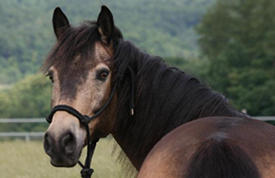 A few weeks back I began giving my colors section a bit of an update – it was time for new images. There is some new info and the rest is just better than it was before.
A few weeks back I began giving my colors section a bit of an update – it was time for new images. There is some new info and the rest is just better than it was before.
Modifiers
There is a variety of different modifying genes which affect base colors as well as each other, they can be further affected by dilutions and white patterns. Today I want to share a little about the sooty or smutty modifier which is thought to be camouflage coloring as it causes black hairs to grow from the topline down.
Sooty Modifier
This modifier is expressed by the growth of black hair in smudges, stripes, blotches, patches or dapples along the topline down. It can mimic the effects of the dun modifier by displaying striping or dorsal. The process can shade evenly (although it doesn’t always), can be seasonal (especially on lighter animals) and can conceal the animal’s actual color altogether.

Smutty Colors
This modifier can have an affect on both chestnut and black bases (including bay) but for obvious reasons only has a physical affect on non-black coats. There has been speculation that this modifier is responsible for dark bays, liver chestnuts and dark palominos although I don’t believe anything conclusive.
The mane and tail of sooty animals varies by base color – bays will always be black, but a palomino will often retain their blonde locks.
Learn More About Color
Be sure to visit the new and improved color section for more information about sooty or smutty horses and stay tuned, next week we’ll take a look at the flaxen modifier.
